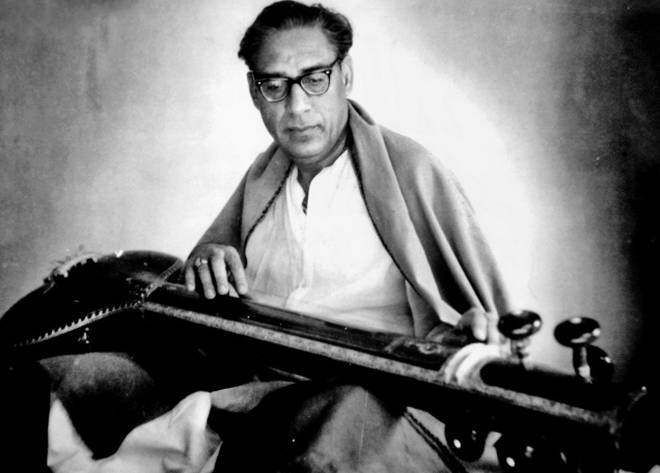Mahmudabad, UTTAR PRADESH / NEW DELHI :
The Raja of Mahmudabad has been fighting to claim his inheritance since 1974, despite being branded ‘enemy’ under the Enemy Property Act.
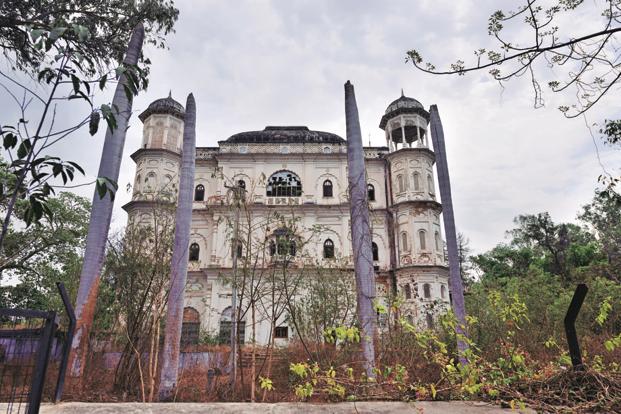
Mahmudabad/Lucknow/New Delhi:
At the entrance of Muqeem Manzil, the sprawling main hall of Mahmudabad Qila (fort), stands a guest table on which is perched a beautiful old world calendar bearing the Mahmudabad crest, two lions flanking a crown. The date card reads 23rd but none of my companions, local Waqf board members and the secretary to the present Raja, can tell me what the day, month or even year is. In many ways the old world calendar stuck on a particular date is an apt metaphor for the current state of the kingdom whose crest it bears.
Since 1974, Mohammad Amir Mohammad Khan, better known as the Raja of Mahmudabad, has been petitioning the government for the return of his properties but apart from a brief respite in 2005, the Raja’s heritage, spread across parts of Lucknow, Sitapur and Nainital, has been mired in litigation with him challenging the highest authority in India; the Indian government itself. It is a heritage that can be traced back to the 16th century and Emperor Akbar’s patronage, but today Khan has to struggle to not be labelled an enemy.
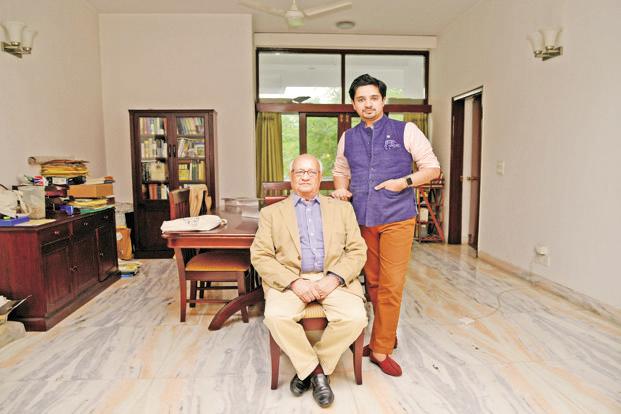
In 1962 when war broke out between India and China, the government confiscated what it referred to as “enemy properties”, namely properties that belonged to a person or a country who or which was an enemy. This included not just Indian citizens of Chinese ethnicity but also those who had migrated to Pakistan during the partition. The same act was applicable during the 1965 India-Pakistan war. One of the people to migrate was a certain Mohammad Amir Ahmed Khan who had left India in 1947 but for Iraq. He eventually took Pakistani citizenship in 1957. This was the former Raja of Mahmudabad, father of Mohammad Khan, and by all accounts a close associate of Mohammed Ali Jinnah.
“I had just arrived in Cambridge to begin my undergraduate degree when our properties were taken over under the Defence of India Rules in 1965. In those days it took some time for news to travel from here to there and hence I learnt about it only a week after it had actually happened,” the Raja tells us.
An elegant man with just a hint of a British accent, the Raja peppers his conversation with quotes from classical Indian poetry to Western philosophers. Every question posed to him is an opportunity to share an anecdote from his family’s rich history which in modern times overlapped quite a bit with the birth of the nation.
He tells us how it was his uncle, his father’s younger brother, Maharaj Mohammed Amir Haider Khan, a barrister at law who practised in Bombay in the chambers of Sir Jamshedji Kanga, who explained just what the label enemy property meant, and why a huge chunk of his father’s inheritance had been taken over by the government. Interestingly both the Raja’s uncle, Haider Khan and his mother, Rani Kaniz Abid of Bilhera choose to stay on in India after partition and were Indian citizens.
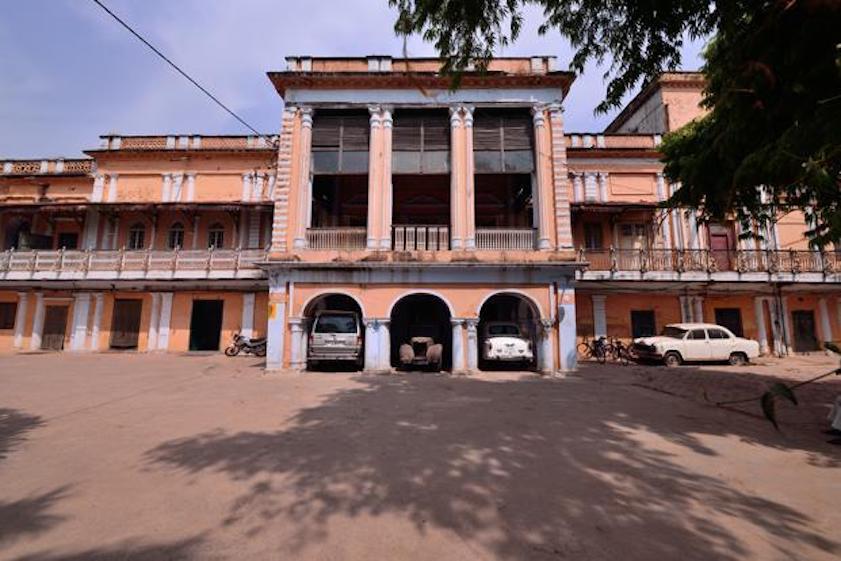
The seized properties included Butler Palace, Mahmudabad Mansion, Lawrie Building and court in Lucknow’s Hazratganj. All these are prime real estate holdings, the court especially is a sprawling marketplace spread over 200,000 square feet.
Apart from these, the Mahmudabad estate’s holdings were spread over Sitapur, Nainital and of course in Mahmudabad itself. While some properties like those in commercial areas already had tenants staying, others were converted into government offices. In fact, Butler Palace situated smack bang in the middle of one of Lucknow’s toniest government colonies used to house the Indian Institute of Philosophical Research. “But it was the taking over of the Qila at Mahmudabad, the ancestral house, which is the venue of all our religious observances throughout the year for the entire community, where my mother actually lived and that was a big shock to me,” recalls the Raja.
The Qila in question is not just the family’s ancestral seat but also the religious and cultural hub of Mahmudabad, home to a large Shia community. Muharram, the first month of the Islamic calendar when the martyrdom of Imam Husain, the grandson of the Prophet, took place, is observed in all its solemnity by the community with the Qila and the shrines built by the Raja’s family as the focal venues.
“It is a very important centre for Mahmudabad both culturally and socially. We have scholars who come from far and wide to preach, all local communities, irrespective of their faiths are involved when Muharram is observed. This has been the tradition here for years and nothing can change it,” Ali Mohammad, the Raja’s secretary, explains to us as we walk around the Qila. It is a magnificent structure with colonnaded arches where many rooms still retain their original furniture right down to the beautiful expansive Persian carpets. The Mahmudabad crest shows up everywhere even as portions of the Qila remain locked up, slowly crumbling under the weight of neglect.
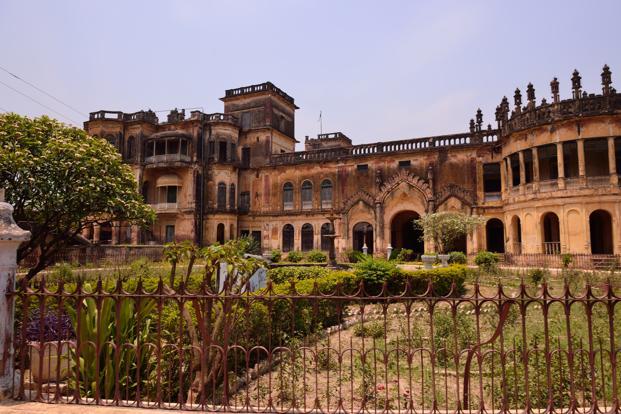
The Qila was indeed taken over by the government in 1965 but since it is under the Waqf board, under an order of the court it was opened up again in eight months. “During those eight months, my mother, my father’s brother and his wife, who was also my mother’s sister, along with all the retainers, lived in the verandah, enduring what had come to pass. The government knew that substantial parts of the Qila are under the Waqf board and our observances have been taking place for centuries. A place like this could not be used against the disadvantage of the country,” reminisces the Raja.
It is still possible to catch a glimpse of how life would have been at the fort when the kingdom was at its peak. The number of families who live here has greatly diminished but they have all been in the service of the royal family for generations.
Muqeem Manzil, the entrance hall, leads to a library stacked with classics bound to make any book lover’s heart beat faster.
In Mahal Sarah, the ladies section of the fort, a group of women still sits everyday and painstakingly create beautiful chikan outfits under the label Qilasaaz which Vijaya Khan, Rani of Mahmudabad, oversees.
The Raja’s father died in London in 1973 where he moved soon after he took Pakistani citizenship, disillusioned as he was with his experience there.
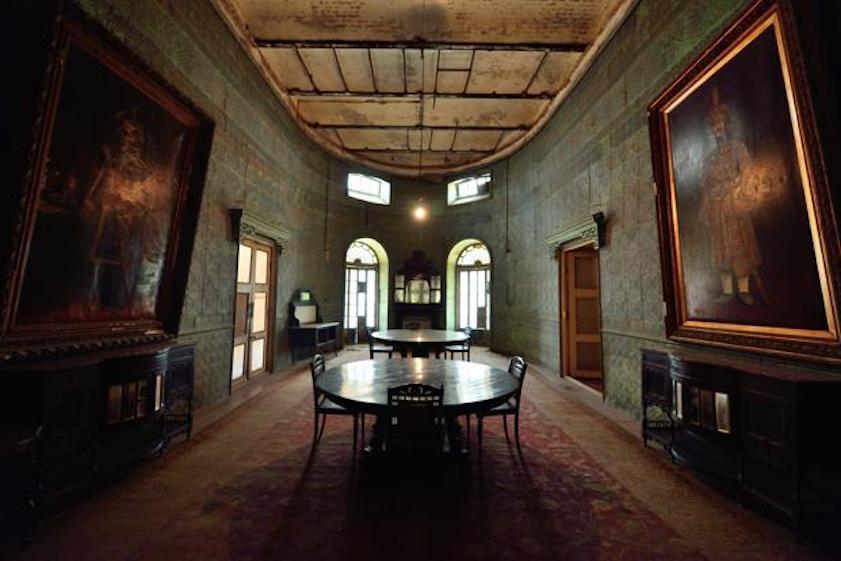
“He was a Shia in a Sunni country, he did not speak any local language and had no roots in the countryside. He had roots only amongst the urban immigrants,” explains the Raja who was 14 years of age when he found out that his father had taken Pakistani citizenship. “I was in school and the term was ending. When I came back, I was told my mother was very unwell. She had a seizure of a terrible sort when she had heard about my father’s citizenship. My father had never asked her to go to Pakistan. It was a foregone conclusion that she would not even countenance it.”
This is a narrative which is slightly at odds with what the current government is pushing with finance minister Arun Jaitley even insisting in a Rajya Sabha debate that the Raja’s father had “sent” his wife and son back to India to claim citizenship.
“I have documentary government proof that we were never anything other than Indians,” claims the Raja.
But why is the Raja’s nationality being discussed in Parliament? The answer to that lies in a process that started in 1974 when he came back to India from Cambridge and petitioned the government to return the properties to the family.
The Enemy Property Act, 1968, categorically defined enemy property as belonging to a citizen of a country which was an enemy and with the passing of the Raja, the properties were bequeathed to his son who was an Indian citizen. Section 18 of the 1968 Act also includes a provision of the properties being returned on a special or general order by the central government, “in such manner as may be prescribed to the owner thereof or to such other person as may be specified in the direction…”
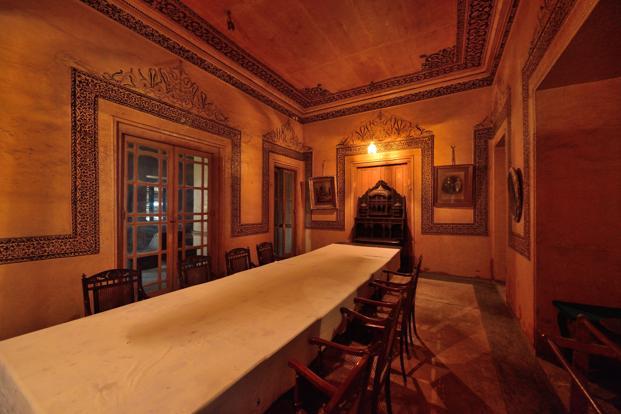
The then young Raja met Morarji Desai, the then prime minister, who assured him the file would be examined. The Raja also met Indira Gandhi, the matter was taken up by the Union cabinet and by the end of 1980 he was informed that the properties will be returned to him but then it was said that only 25% of the properties will be returned.
“I was asked to furnish proof that I was my father’s legal heir. A succession certificate was required. The district court in Lucknow in 1986 gave a decision in my favour,” he says.
But the 25% clause remained and it is this that took the Raja to the Bombay high court seeking a return of his property in 1997. In between, there was stint with politics as a two-time MLA from Mahmudabad from the Congress party even though his struggle for his inheritance continued.
The Bombay high court returned the Raja’s entire property to him but the government then took up the matter in Supreme Court. And in 2005, the apex court gave what became a landmark and eventually a very contentious judgement. Declaring that enemy property is only vested with the custodian and that the Raja is a bona fide citizen of the state and not an enemy as defined by the Act, all of the Raja’s properties were returned to him.
It is a day the Raja still remembers clearly because he says that is the day his pride in India and his belief in the nation was reinforced. “It made me proud. I felt an injustice had been reversed,” he recalls.
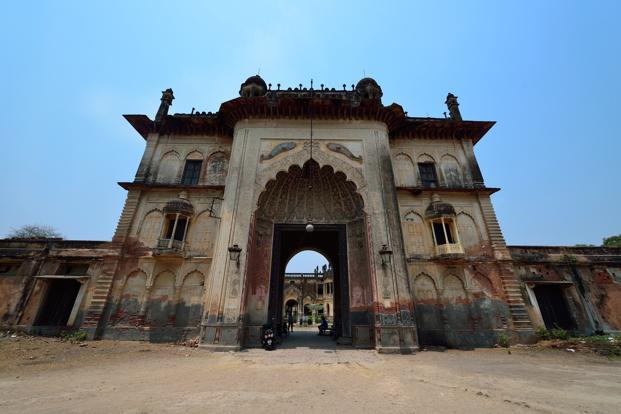
But this was just the beginning of another round of struggle. For while properties like the heritage hotel Metropole in Nainital and Butler Palace in Lucknow were returned to the Raja, the holdings in Lucknow’s prime commercial area were occupied by tenants, most of whom were paying a pittance. Halwasiya court, for instance, which is home to several high-end showrooms, was given out on rent by the Raja’s father on a 90-year lease for a paltry amount of Rs600. After several meetings, perusal of property records, it was decided that the lease will be honoured.
From top brands to iconic restaurants, a lot of big names in Hazratganj, just across the road from Halwasiya court, are housed in Mahmudabad properties and pay rents in the vicinity of Rs500-1,000 per month. In December of last year, the district administration decided to revise the rent of enemy properties. A Hindustan Times report cited a government official as saying that shops run out of enemy property, especially in Hazratganj, will now pay 30% of the market rate which comes to Rs330 per sq. metre. The money will go to the government.
But even as these properties were not returned, work on the others began in full swing. The restoration of Metropole Hotel was undertaken by the Raja’s wife while Butler Palace too was being reimagined in all its previous glory.
“We borrowed from banks, put in our own money, developed Waqf land…and then one fine morning in 2010 I heard that the government is issuing an ordinance that seeks to amend the Enemy Property Act,” he says. It was the Raja’s worst nightmare come true. Overnight his properties were taken back and it was 1965 for the family all over again.
The ordinance which was introduced by the United Progressive Alliance government reportedly amid fears that the Supreme Court judgement will open a Pandora’s box of claims from others across the country, sought to amend the 1968 Act. On 17 March 2017, the amendments to the Act were passed which expanded the definition of enemy from the 1968 Act to include citizens of India who are the legal heirs and successors of the enemy or enemy subject.
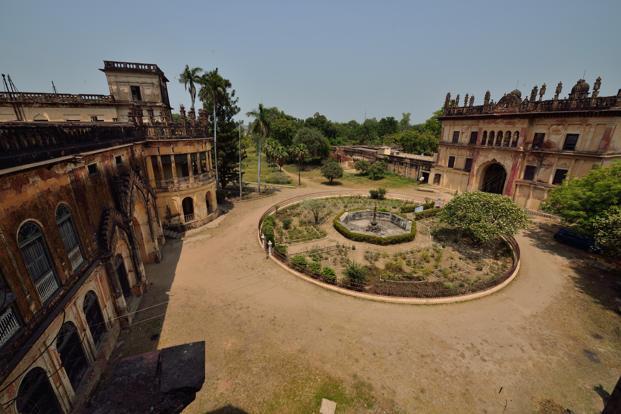
The amendment also gave the government the right to sell the property, thereby implying that the owner of an enemy property was the state. In effect, all of the Raja’s properties were now the properties of the Indian government, laws of succession, Indian citizenship and the Supreme Court order notwithstanding.
“We fought 40 years for justice. We went to the government, we went to the court…we availed every recourse that is available to the citizen only to be told that it is retrospectively overturned. This is in the teeth of justice inequality,” says Khan, Rani of Mahmudabad.
The daughter of former foreign secretary Jagat Singh Mehta, Khan is a quiet woman who states her family’s disappointment and anger at the ordinance and the subsequent amendment in a definite manner. We are travelling in an ambassador from Lucknow to Mahmudabad as she tells us about the work that had started on all properties and just how cruelly they’ve been allowed to fall apart. Case in point is Butler Palace, which is almost in ruins. Grass as high as an adult’s waist impedes access to the building though it is no deterrent to the vandals who come here as evinced by the empty beer bottles one finds lying next to the gate. “To think there was a time when we would actually come here to have tea in the evening,” says Ali Mohammad, the Raja’s secretary, as he takes us for a walk around the properties in Lucknow.
Every member of the Raja’s family, be it his wife or two sons, is an independent authority on the Enemy Property Act and its amendment. The older son is a professor at Ashoka University who has written several editorials on the Act, while the younger son, who is pursuing his PhD, can discuss every amendment in the new Act threadbare.
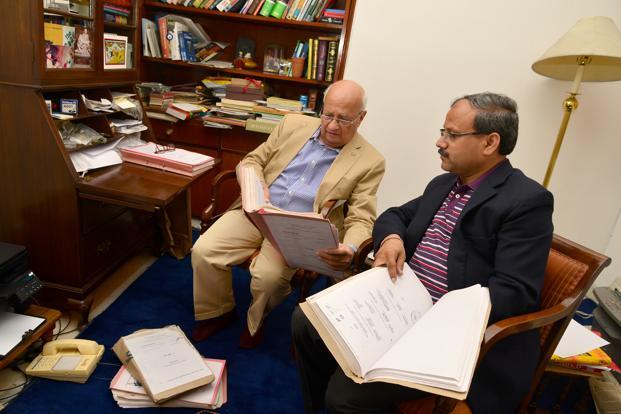
There is a palpable sense of anger but what stings most is the usage of the word enemy. “Here I am, sitting next to you and I am an enemy. This Act has created deep distress, especially financial. The only thing we have is the benefit of education which enables us to realize that anger and cynicism are futile,” says Khan, Rani of Mahmudabad.
There is a palpable feeling that the ordinance and the subsequent amendments were brought in to target the family specifically though no one says so outright. In fact, the ruling party’s defence in Rajya Sabha during the debate for the passing of the bill centred mostly around the Raja’s case, with it being said that the former Raja, “who threw his weight behind the idea of a separate Muslim nation” sent his wife and son “back to become Indian citizens and claim Indian property”. Finance minister Jaitley also said that the Raja’s family had lost the title to the properties in 1965 so the question of inheriting these does not arise.
The Raja currently has a writ petition in the Supreme Court but the fate of it remains up in the air. Niraj Gupta, his advocate, worries about the powers vested in the custodian given that the office has come under the radar for some questionable deals. The former custodian of enemy property Dinesh Singh, an IRS officer, was recommended for criminal action by the Central Bureau of Investigation for helping a developer acquire an enemy property.
There have been several cases against enemy properties in Indian courts with few settlements being in the favour of the custodian of enemy property, as neither the rights of the legal heirs of the enemy or the duties of the custodian were ever clearly defined.
However, none of these cases have been as high-profile as that of the Raja of Mahmudabad’s given his family legacy, the association with Jinnah and the sheer magnitude of the real estate at stake. The amendment to the Act, however, removes all ambiguity vis-à-vis ownership while attempting to create a different class of citizens, the children of enemies. This is a clear violation of Article 14 of the Constitution which guarantees the right to equality and it is perhaps on this ground that the amendment can be challenged.
Till then the Raja, who in William Dalrymple’s Age of Kali, had said visiting Mahmudabad brings him “terrible bouts of gloom”, sits in his well-appointed living room in New Delhi waiting to see what new curve ball life throws at him.
“However, I will always be able to say that I did get justice in this country,” he concludes. The semblance of it, in the form of the 2005 Supreme Court judgement is perhaps the only victory he can savour from the fight that has taken over his entire life.
This is the concluding part of a two-part series.
Part 1: The casualties of the Enemy Property Act
source: http://www.livemint.com / Live Mint / Home> Explore / by Nikita Doval / July 19th, 2017
